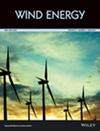风电机电故障检测的卷积神经网络框架
IF 3.3
3区 工程技术
Q3 ENERGY & FUELS
引用次数: 1
摘要
对风力涡轮机齿轮箱和发电机进行有效和及时的健康监测对于降低运营和维护活动的成本至关重要,特别是在海上。本文提出了一种基于高维原始状态监测数据的可扩展、轻量级卷积神经网络(CNN)框架,用于风力发电机组多机电故障的自动检测。所提出的方法利用了从各种信号中组合信息的潜力,以学习特征并区分故障类型及其严重程度。由于CNN层用于从信号中提取特征,因此该架构在时域内工作,可以实时消化高分辨率的多传感器数据流。为了克服人工智能模型固有的黑盒特性,本研究提出了两种可解释性技术,多维尺度和分层相关传播,以分析所提出模型的内部工作并识别与故障分类相关的信号特征。实验结果表明,该方法对所有故障案例的分类准确率均在99.9%以上,证明了该故障检测系统的有效性。本文章由计算机程序翻译,如有差异,请以英文原文为准。
Convolutional neural network framework for wind turbine electromechanical fault detection
Effective and timely health monitoring of wind turbine gearboxes and generators is essential to reduce the costs of operations and maintenance activities, especially offshore. This paper presents a scalable and lightweight convolutional neural network (CNN) framework using high‐dimensional raw condition monitoring data for the automatic detection of multiple wind turbine electromechanical faults. The proposed approach leverages the potential of combining information from a variety of signals to learn features and to discriminate the types of fault and their severity. As a result of the CNN layers used to extract features from the signals, this architecture works in the time domain and can digest high‐resolution multi‐sensor data streams in real‐time. To overcome the inherent black‐box nature of AI models, this research proposes two interpretability techniques, multidimensional scaling and layer‐wise relevance propagation, to analyse the proposed model's inner‐working and identify the signal features relevant for fault classification. Experimental results show high performance and classification accuracies above 99.9% for all fault cases tested, demonstrating the efficacy of the proposed fault‐detection system.
求助全文
通过发布文献求助,成功后即可免费获取论文全文。
去求助
来源期刊

Wind Energy
工程技术-工程:机械
CiteScore
9.60
自引率
7.30%
发文量
0
审稿时长
6 months
期刊介绍:
Wind Energy offers a major forum for the reporting of advances in this rapidly developing technology with the goal of realising the world-wide potential to harness clean energy from land-based and offshore wind. The journal aims to reach all those with an interest in this field from academic research, industrial development through to applications, including individual wind turbines and components, wind farms and integration of wind power plants. Contributions across the spectrum of scientific and engineering disciplines concerned with the advancement of wind power capture, conversion, integration and utilisation technologies are essential features of the journal.
 求助内容:
求助内容: 应助结果提醒方式:
应助结果提醒方式:


